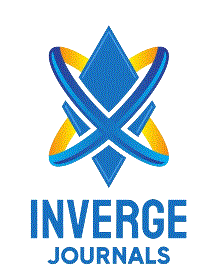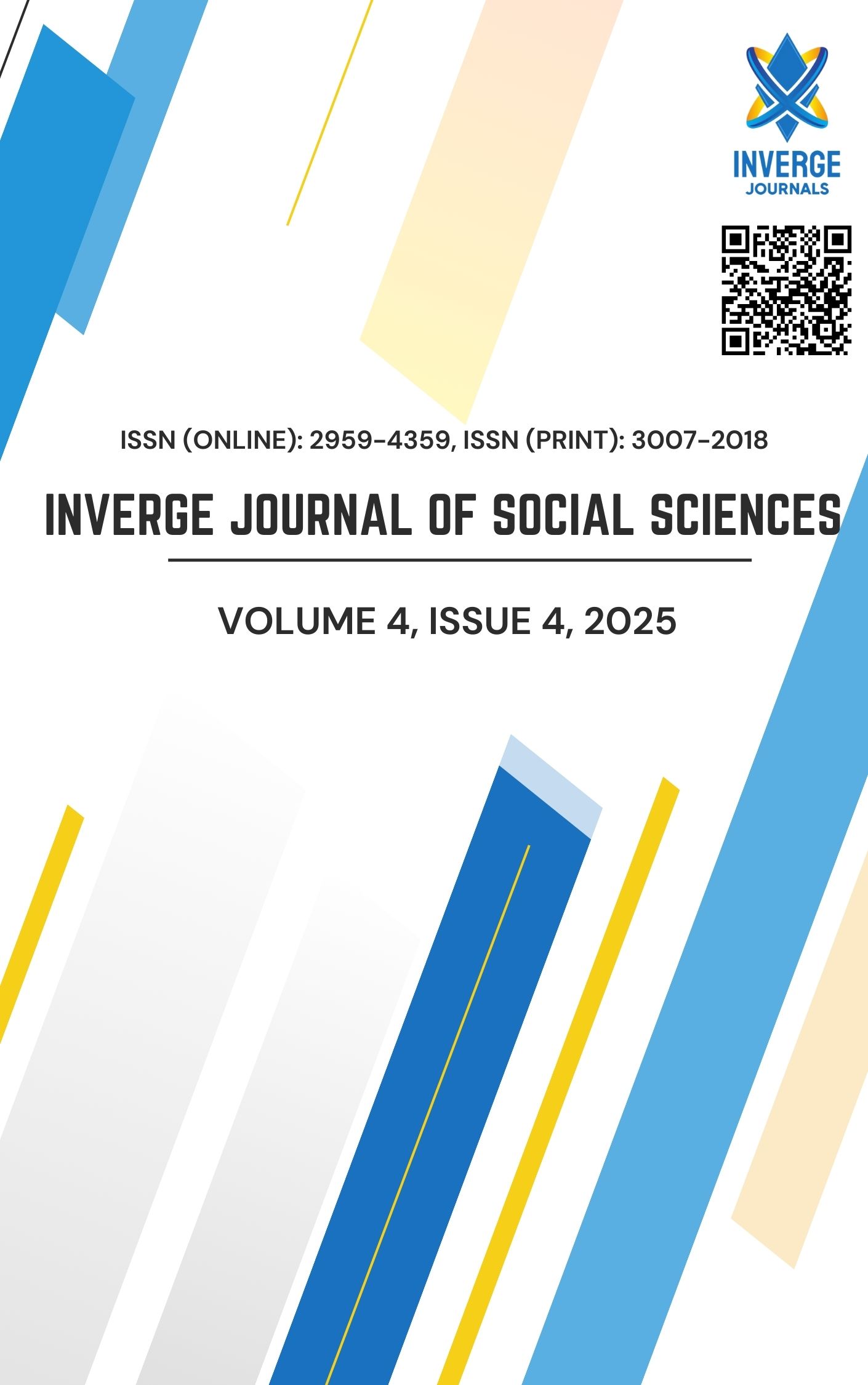Storytelling Pedagogy for Creativity and Critical Thinking in Level VII History through Storytelling in Tech-Limited Settings
DOI:
https://doi.org/10.63544/ijss.v4i4.189Keywords:
Storytelling Pedagogy, Creativity and Critical Thinking Skills, History Education, Developing CountriesAbstract
This action research explores the effectiveness of storytelling as a pedagogical strategy to enhance creativity and critical thinking skills among 64 Grade VII students (aged 12–13) in a technology-limited, middle-class school in Pakistan. The study was motivated by persistent challenges in traditional history education, which often relies on rote memorization, leading to student disengagement and a lack of higher-order cognitive development. The investigation employed a quasi-experimental design conducted over a two-week period. The intervention consisted of a pre-test to establish a baseline, two structured storytelling practice sessions, and a post-test. During the sessions, students were guided to create and present their own historical narratives using the “4 Ws” framework (who, what, when, why) to scaffold their analytical reasoning. This methodology was intentionally designed to be a low-cost, replicable model for educators in developing countries with constrained resources.
Quantitative results demonstrated substantial improvement. The average score for story writing increased by 25%, from 57% to 82%. When assessed against a 5-point rubric, creativity scores rose from 2.80 to 4.28, and critical thinking scores improved from 2.77 to 4.13, indicating significant growth in both skill sets.
Qualitative data from student narratives provided deeper context, revealing an enhanced ability to connect historical causes and consequences. A notable finding was students' spontaneous use of perspective-taking, often drawing narrative inspiration from the popular historical drama Diriliş Ertuğrul.
While the study is limited by its sample size and short duration, the findings strongly suggest that storytelling is a viable, low-tech pedagogy for fostering higher-order thinking in resource-constrained settings. Future research should involve longitudinal studies with larger samples to validate the long-term impact and explore cross-disciplinary applications.
References
Adesina, O. C. (2006). Teaching history in twentieth century Nigeria: The challenges of change. History in Africa, 33, 17–37. https://doi.org/10.1353/hia.2006.0002
Adesote, S. A., & Fatoki, O. R. (2013). The role of ICT in the teaching and learning of history in the 21st century. Global Journal of Education Research, 8(21), 2155–2159.
Akhtar, Q., Butt, S., & Niaz, M. (2024). Time series analysis of poverty reduction indicators: Case of Pakistan, India and Bangladesh. Qlantic Journal of Social Sciences and Humanities, 5(2), 170–183.
Allison, J. (2008). History educators and the challenge of immersive pasts: A critical review of virtual reality ‘tools’ and history pedagogy. Learning, Media and Technology, 33(4), 343–352. https://doi.org/10.1080/17439880802497099
Alidri, A. (2022). Using emerging technologies to innovate the teaching and learning of history at Gulu University [Conference paper, 10th Pan-Commonwealth Forum (PCF10)]. https://doi.org/10.56059/pcf10.8873
Asif, M., & Shaheen, A. (2022). Creating a high-performance workplace by the determination of importance of job satisfaction, employee engagement, and leadership. Journal of Business Insight and Innovation, 1(2), 9–15.
Astuti, C. W. (2017). The effectiveness of storytelling technique in teaching spoken narrative text to eleventh grade of senior high school students [Final project, Semarang State University]. Semarang State University. https://lib.unnes.ac.id/10213
Aurangzeb, M., Tunio, M., Rehman, Z., & Asif, M. (2021). Influence of administrative expertise on human resources practitioners on the job performance: Mediating role of achievement motivation. International Journal of Management, 12(4), 408–421.
Barzaq, M. (2009). Integrating sequential thinking through teaching stories in the curriculum. Action Research. AlQattan Center for Educational Research and Development QCERD.
Bates, A. W. (2015). Teaching in a digital age: Guidelines for designing teaching and learning. BCcampus. https://opentextbc.ca/teachinginadigitalage/
Booth, A. (1993). Learning history in university: Student views on teaching and assessment. Studies in Higher Education, 18(2), 227–235. https://doi.org/10.1080/03075079312331382389
Butt, S., Mubeen, I., & Yazdani, N. (2024). Exploring the lived experiences of individuals to manage and cope with type 2 diabetes applying IPA. Pakistan Languages and Humanities Review, 8(2), 526–539.
Butt, S., & Yazdani, N. (2023). Implementation of quality management practices and firm’s innovation performance: Mediation of knowledge creation processes and moderating role of digital transformation. Pakistan Journal of Humanities and Social Sciences, 11(4), 3881–3902.
Chang, C. (2014). An IPA-embedded model for evaluating creativity curricula. Innovations in Education and Teaching International, 51(1), 59–71. https://doi.org/10.1080/14703297.2013.856144
Dussel, I. (2022). Digital colonialism and education: Challenges for the global South. Comparative Education Review, 66(3), 456–478. https://doi.org/10.1086/720123
Ghernaout, D., Touahmia, M., Aichouni, M., Alghamdi, A., & Messaoudene, N. A. (2018). Fostering students’ creativity through innovative learning tools. Higher Education Research, 3(1), 9. https://doi.org/10.11648/j.her.20180301.13
Hadjiyanni, T., & Zollinger, S. W. (2010). Stimulating student interest in design history classes. Archnet-IJAR: International Journal of Architectural Research, 4(2/3), 296.
Haleem, A., Javaid, M., Qadri, M. A., & Suman, R. (2022). Understanding the role of digital technologies in education: A review. Sustainability, 14(7), 4234. https://doi.org/10.3390/su14074234
Hammerness, K., & Kennedy, B. (2018). Teaching practices grounded in foundational knowledge, visions, and contexts. The New Educator, 15(1), 66–83. https://doi.org/10.1080/1547688X.2018.1506070
Hicks, D., Ogle, J. T., & van Hover, S. (2025). Simulations in social studies: Practical implications from classroom to extended reality. Annals of Social Studies Research for Teachers, 7(1), 29–53. https://doi.org/10.29173/assert86
Isbell, R., Sobol, J., Lindauer, L., & Lowrance, A. (2004). The effects of storytelling and story reading on the oral language complexity and story comprehension of young children. Early Childhood Education Journal, 32(3), 157–163.
Khan Academy. (2024). Khan Academy efficacy results, November 2024. https://blog.khanacademy.org/khan-academy-efficacy-results-november-2024/
Kim, S. (2023). The role of educational technology in post-war Korea: A historical analysis. Asia Pacific Education Review, 24(4), 567–583. https://doi.org/10.1007/s12564-023-09845-6
Koster, J. B. (2012). Growing artists: Teaching the art to young children. Wadsworth.
Le, T. T. A., Nguyen, T. A. M., Bui, T. T., Luu, T. D., & Dinh, T. K. L. (2021). Applying mind map in teaching history in primary schools – Case study of Dak Lak Province, Vietnam. Journal of Nonformal Education, 7(1), 119–126. https://doi.org/10.15294/jne.v7i1.29278
Masih, M., Suleman, S., Khan, M. H., Sahito, D. Z., & Shahid, D. S. (2025). The future classroom: Integrating AI and social media for adaptive learning. Inverge Journal of Social Sciences, 4(3), 98–111. https://doi.org/10.63544/ijss.v4i3.150
OECD. (2022). Education at a glance 2022: OECD indicators. Organisation for Economic Co-operation and Development. https://doi.org/10.1787/3197152b-en
Phillips, K. H. (1996). Teaching kids to sing. Schirmer Books.
Rahmadina, S., Hindana, N. F., Haq, A. F., Alifia, F. E., Mahardika, I. K., Yusmar, F., Firdausi, S., & Astuti, S. R. D. (2025). Evolusi pendidikan klasik dan modern serta kajian terhadap faktor-faktor pendidikan. NUSRA: Jurnal Penelitian Dan Ilmu Pendidikan, 6(1), 39–47. https://doi.org/10.55681/nusra.v6i1.3381
Rashdi, S. M. F., Agha, N., & Hina, B. (2025). The Impact of Maternal Employment on Children’s Educational Attainment at Primary School Level: A Sociological Study of Working Mothers in Khairpur City. Inverge Journal of Social Sciences, 4(3), 288–297. https://doi.org/10.63544/ijss.v4i3.167
Sebbowa, D. K., & Ng’ambi, D. (2020). Teaching history in ways C21st students learn—a design-based research perspective. International Journal of Learning, Teaching and Educational Research, 19(9), 259–280. https://doi.org/10.26803/ijlter.19.9.14
Shah, D. M. I., & Tahir, D. A. R. (2025). The meanings of the ‘wisdom’ and the ‘hikmat’: A philosophical and analytical discourse. Inverge Journal of Social Sciences, 4(2), 33–41. https://doi.org/10.63544/ijss.v4i2.123
Silvita, S., Sutarno, & Indrowati, M. (2024). Improving evaluation skills through flipped-problem-based learning with digital storytelling task: A systematic review. Journal of Higher Education Theory and Practice, 24(1), 167–185. https://doi.org/10.33423/jhetp.v24i1.6769
Skinner, B. F. (1953). Science and human behavior. Macmillan.
Sultana, I., & Sajjad, P. D. S. (2025). Shaping young minds: How school environment predicts social and emotional learning (SEL) in primary schools. Inverge Journal of Social Sciences, 4(3), 143–155. https://doi.org/10.63544/ijss.v4i3.154
UNESCO. (2007). ICT in education in sub-Saharan Africa [Working paper]. United Nations Educational, Scientific and Cultural Organization. https://unesdoc.unesco.org/ark:/48223/pf0000152061
UNESCO. (2022). The ICT competency framework for teachers harnessing OER project: Digital skills development for teachers (Document CI-2022/WS/4). United Nations Educational, Scientific and Cultural Organization. https://unesdoc.unesco.org/ark:/48223/pf0000383206
Van Broekhoven, K. (2023). The evaluation and selection of creative ideas in educational settings: Current knowledge and future directions. Creativity Research Journal, 37(2), 307–313. https://doi.org/10.1080/10400419.2023.2253403
Vygotsky, L. S. (1978). Mind in society: The development of higher psychological processes. Harvard University Press.
World Bank. (2019). Reimagining human connections: Technology and innovation in education at the World Bank. World Bank Group. https://documents1.worldbank.org/curated/en/829491606860379513/pdf/Reimagining-Human-Connections-Technology-and-Innovation-in-Education-at-the-World-Bank.pdf
Yanti, F., Lufri, L., & Ahda, Y. (2025). Current trends in augmented reality to improve senior high school students’ skills in Education 4.0: A systematic literature review. Open Education Studies, 7, 20240053. https://doi.org/10.1515/edu-2024-0053
Yulianti, E., Abdul Rahman, N. F., Rahmadani, A., Phang, F. A., & Suwono, H. (2024). Exploring students’ creativity using STEAM-based reading texts. Journal of Advanced Research in Applied Sciences and Engineering Technology, 44(1), 181–187. https://doi.org/10.37934/araset.44.1.181187
Downloads
Published
How to Cite
Issue
Section
Categories
License
Copyright (c) 2025 Raziah Tajammal, Ramshah Tajammal, Dr. Sadia Butt, Dr. Tayyaba Ashraf , Mahnoor Anwar

This work is licensed under a Creative Commons Attribution-NonCommercial-ShareAlike 4.0 International License.
The work is concurrently licensed under a Creative Commons Attribution-NonCommercial-ShareAlike 4.0 International License, which permits others to share the work with an acknowledgement of the authorship and the work's original publication in this journal, while the authors retain copyright and grant the journal the right of first publication.









